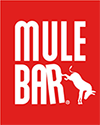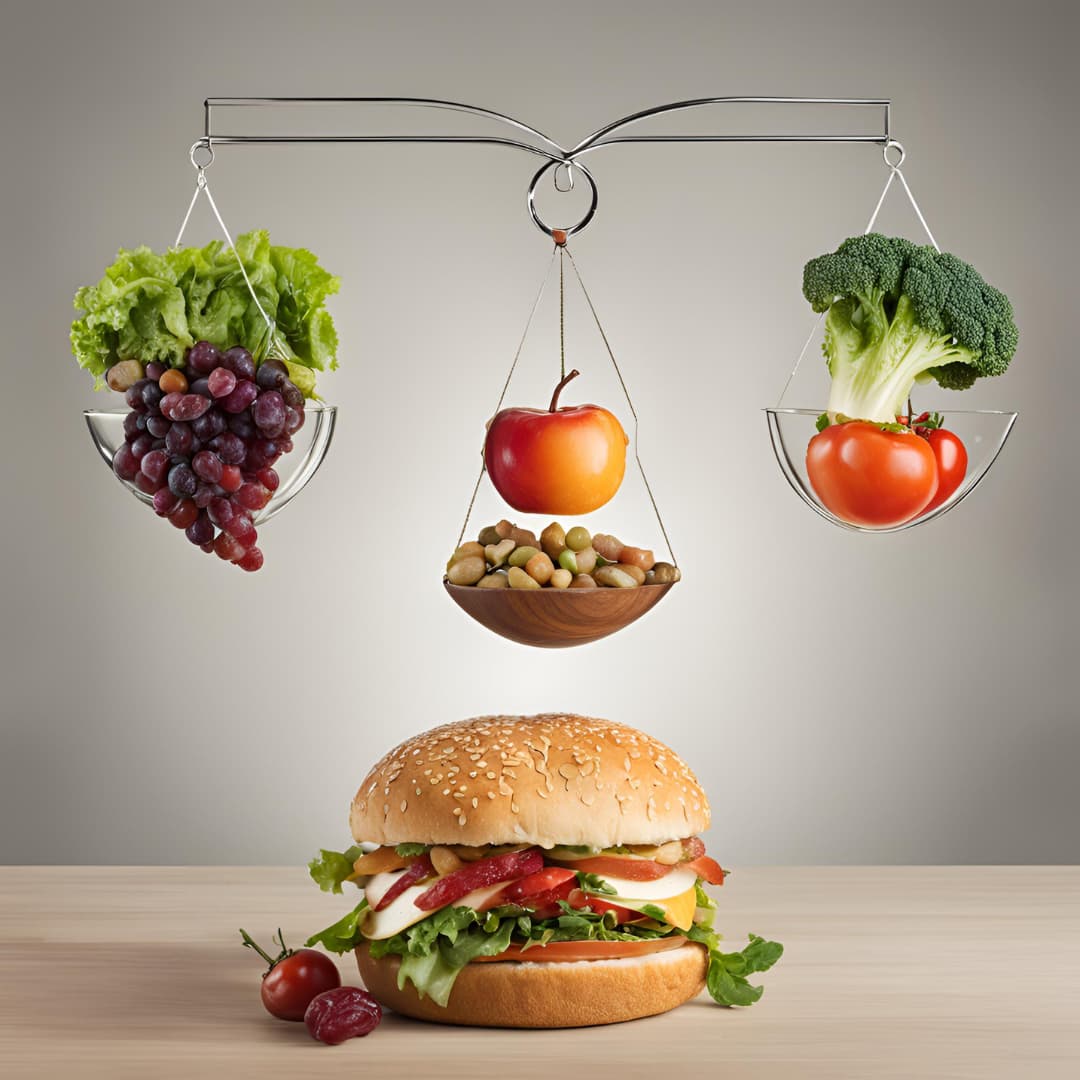Overly strict diets that ban certain foods quickly reveal their flaws in the long run. In contrast, rebalancing your diet reinvents the foundations of a healthy diet by adapting them to your metabolism and daily life, without restrictions or feelings of deprivation.
Eat better every day, not less
Much more than simply calculating calories, rebalancing your diet considers your plate as a whole. This method is based on three key elements: choosing quality foods, adapting portions to your actual needs, and maintaining a regular meal schedule to maximize satiety.
Unlike temporary diets, this approach permanently transforms your eating habits by establishing a peaceful relationship with food. When you find your balance, these new eating habits naturally integrate into your daily life. Learning to eat better then becomes second nature, without constantly thinking about it.
The fundamental principles of balanced nutrition
A successful rebalancing diet emphasizes minimally processed foods and a nutritionally complete variety, while limiting added sugars and unhealthy fats. This method promotes gradual weight loss, improves your metabolic health, stabilizes your energy throughout the day, and helps maintain a healthy weight over the long term.
Progress step by step towards new eating habits
To begin a balanced diet, take a step-by-step approach with achievable goals. Changing all your habits at once could be discouraging. Instead, set yourself a small weekly challenge to gradually anchor each new practice.
Start with simple substitutions: swap white bread in the morning for whole-wheat bread with an egg or dairy product and a piece of fruit. Also, replace processed snacks with fresh fruit, nuts, or a natural energy bar.
Identify and replace processed foods
Ultra-processed products are loaded with salt, added sugars, and low-quality fats. A good indicator: the longer the ingredient list, the more processed the product is. By favoring short supply chains and raw foods, you improve your eating habits while reducing your environmental footprint.
Gradually reduce your intake of prepared foods, excess salt, and soda. Opt for fruit for dessert instead of a processed pastry, and sauté your fresh vegetables for a few minutes instead of using canned foods. These foods, rich in empty calories, tire your body and disrupt digestion.
Balance also includes pleasure: occasionally allowing yourself a healthy treat like a cereal and fruit bar maintains motivation and makes a balanced diet more sustainable. Consumed in moderation, this indulgent break doesn't hinder weight loss and even contributes to satiety.
Create balanced meals with natural foods
A balanced diet focuses primarily on natural, minimally processed foods. Choose colorful vegetables and proteins (animal or plant-based, such as soy protein. or peas protein), complex carbohydrates (wholegrain rice, oats, quinoa) and good fats from oily fish, avocado or oilseeds.
Structure your plates for better health
For balanced meals, compose your plate with:
- 20 to 30g of protein per serving
- Complete starchy foods adapted to your level of physical activity
- A generous amount of varied vegetables
This combination prolongs the feeling of satiety, stabilizes blood sugar and actively contributes to better health.
Hydration: an essential pillar of dietary rebalancing
Drinking enough water (1.5 to 2 liters per day) allows you to:
- Effectively regulate metabolism
- Moderate the sensations of hunger
- Optimize blood circulation
- Facilitate the elimination of fats
This simple habit constitutes the essential basis for a successful dietary rebalancing.
A glass of water before each meal increases satiety and naturally reduces the amount consumed. Replacing sugary drinks with water is a simple but incredibly effective trick for those looking to lose weight sustainably.
Adapt your hydration to your sporting effort
During physical activity, water needs increase considerably. Drink 250 to 300 ml every 15-20 minutes during exercise to:
- Avoid dehydration
- Protect your tendons and joints
- Prevent muscle cramps
- Maintain your performance
Hydration drinks specialized supplements, rich in electrolytes and minerals, effectively compensate for losses due to perspiration. Their regular consumption helps maintain the hydro-electrolytic balance, essential for maintaining a stable weight and optimal health.
Dietary rebalancing adapted to athletes
For athletes, a well-designed dietary rebalancing plan means adjusting nutrient intake based on specific training needs. The key approach is to distribute protein across all meals (1.4 to 2 g per kg of body weight, depending on goals), then adjust carbohydrate intake based on the intensity and frequency of workouts.
Nutrition before, during and after exercise
Regular physical activity effectively promotes weight loss, improves heart health, and preserves muscle mass. Activities like brisk walking, cycling, and swimming are excellent options for toning your core while protecting your joints.
For prolonged efforts, maintaining your energy reserves is crucial. Depending on your sport and preferences, you can opt for energy bars, energy gels, energy compotes or sports drinks made from natural ingredients.
Beyond its physical benefits, exercise stimulates the production of endorphins, which boost morale and make it easier to stick to a balanced diet. This natural effect maintains long-term motivation and encourages the maintenance of a balanced diet even on rest days.
Nutritional supplements: targeted support for athletes
In the As part of a sports rebalancing program, certain supplements can address temporary deficiencies and optimize recovery. For example, 10g per day of hydrolyzed marine collagen helps strengthen tendons, while magnesium bisglycinate regulates muscle function and reduces nervous fatigue.
A daily intake of 1 to 2g of omega-3 EPA/DHA limits post-exercise inflammation and supports the cardiovascular system. Combined with natural vitamin C (such as that found in acerola), this intake promotes collagen production and strengthens immunity - nutrients that can be incorporated into smoothies or taken in capsules during long sessions.
Anti-inflammatory diet for better recovery
Focus on an anti-inflammatory diet rich in oily fish, berries, citrus fruits, and green vegetables. A typical rebalancing meal plan might include: porridge with berries and chia seeds in the morning, a quinoa salad with salmon and walnuts for lunch, and oily fish with sweet potatoes in the evening.
Limit saturated fats and alcohol, which slow muscle repair. Combined with a well-structured rebalancing program, this approach accelerates muscle healing, reduces the risk of injury, and promotes healthy, sustainable weight loss.
Sleep and recovery: the winning equation for weight loss
Lack of sleep literally ruins your efforts to rebalance your diet and slows down your weight loss goals, while negatively impacting your health. Fatigue decreases your motivation to prepare balanced meals, increases emotional cravings, and pushes you toward sugary snacks.
A good night's sleep boosts metabolism, regulates hunger hormones (ghrelin and leptin), and improves your athletic performance. Instead of pushing yourself during a workout when you're exhausted, treat yourself to a proper restorative nap.
Action plan to start your dietary rebalancing
To successfully rebalance your diet, take it gradually: start by drinking more water and increasing your vegetable intake for two weeks. Then add healthy snacks, include a serving of protein with each meal, and then incorporate foods rich in omega-3s and antioxidants.
Meal prep and practical organization
Plan your meals ahead of time: Prepare your whole grains, measure out your protein portions, and pre-cut your vegetables. These preparations ensure nutritious food is available even on busy days, avoiding impulse purchases at the vending machine.
To help you, opt for natural snacks like homemade bars made with oats, dates, and nuts. Read labels carefully because eating better means making informed choices. Mulebar products, for example, apply this approach with 100% natural recipes without artificial additives.
Track your progress without obsessing over the scale
Rather than focusing solely on weight, consider your overall health: sleep quality, energy levels, and athletic performance. After six to eight weeks, adjust your rebalancing program based on these indicators and continue this regular monitoring.
Effective dietary rebalancing doesn't require extreme deprivation or constant frustration to achieve lasting weight loss and improve your health. This approach respects your pace, prioritizes taste pleasure, and lays the foundation for better long-term health.






Leave a comment
This site is protected by hCaptcha and the hCaptcha Privacy Policy and Terms of Service apply.